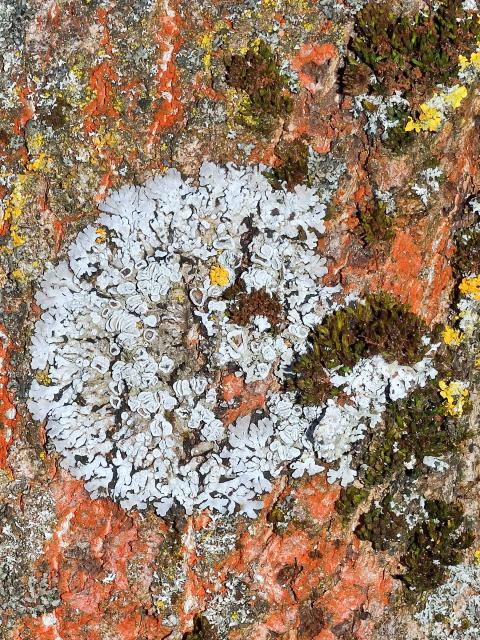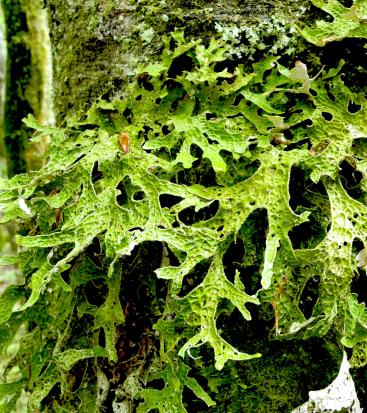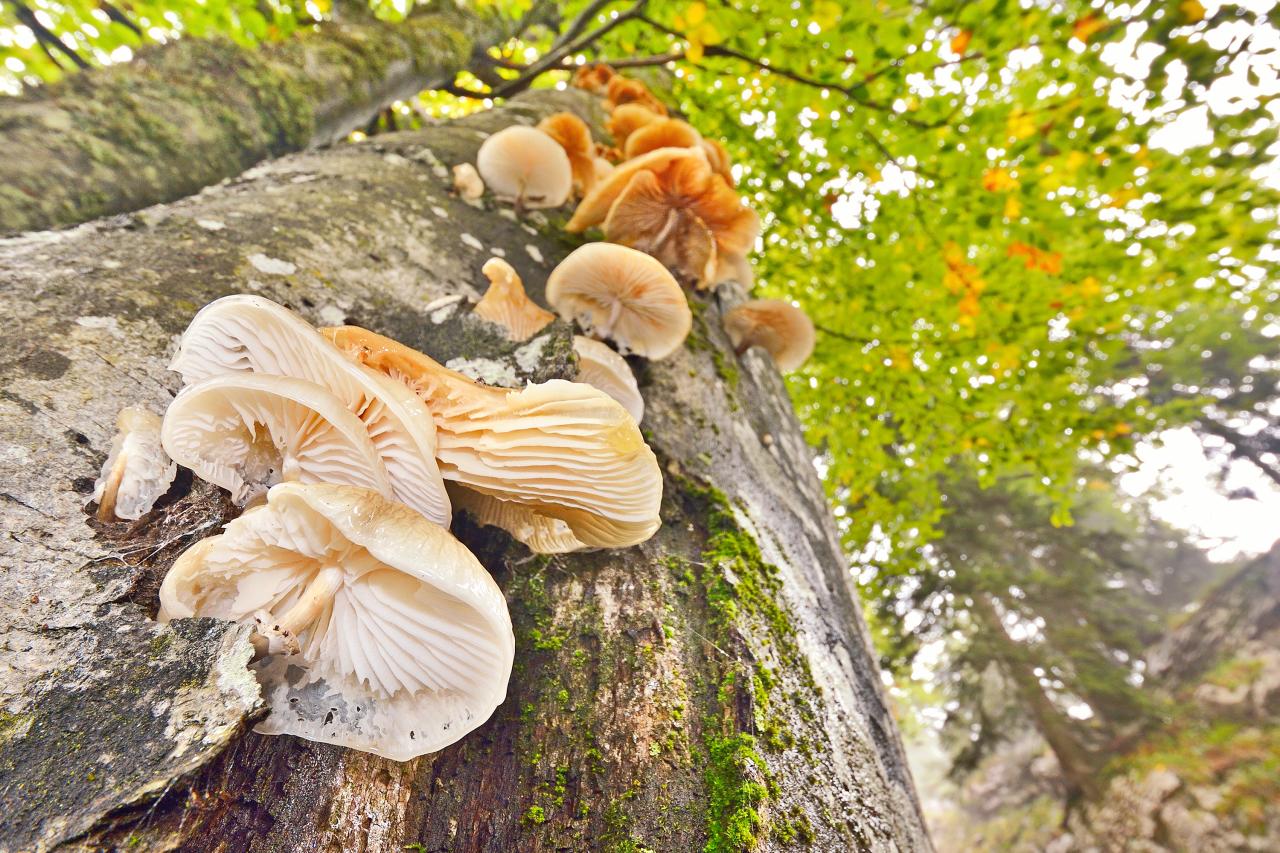Mushrooms
Near-natural forest stands are characterized by the presence of a large number of deadwood-using fungi. However, many of these fungi have become rare due to the large-scale commercial exploitation of forests.
Rare and endangered species are particularly dependent on thick deadwood with large diameters. The well-known and widespread tinder fung us(Fomes fomentarius) is a characteristic fungus for somewhat thicker beech deadwood. Another well-known tree fungus is the red-edged tree fungus. It is also known as the spruce mushroom (Fomitopsis pinicola) .

Fungus + algae = lichen
Lichens
Lichens are formed from two completely different organisms. They consist of a fungus and one or more types of algae. Together they form a completely new life form that resembles neither the fungus alone nor the algae. Depending on the growth form, a distinction is made between beard lichens, shrub lichens, leaf lichens and crustose lichens. With its fine fungal filaments, the fungus forms the body of the lichen, which is also known as the bearing or thallus. This partnership is dominated by the fungus and determines the shape of the lichen. It protects the algae from drying out and thus enables them to live outside the water. It supplies the algae with water and nutrient salts and protects them from excessive radiation. The algae are producing partners. They contain the leaf green chlorophyll, which they use for photosynthesis. They supply the fungus with the resulting sugar as food, as the fungus cannot produce it itself.
Lichens are particularly suitable as bioindicators and react extremely sensitively to environmental influences. Lichens are often silent harbingers of major changes in ecosystems. Their occurrence depends above all on air quality. They indicate when substances are present in excess or important nutrients are lacking. Bearded lichens such as the common tree beard or the true lung lichen are a sign of high air quality. They only occur in areas where the air is very clean.
A number of lichens colonize old trees or dead wood and some are even tied to these habitats. Many of the lichen species are dependent on large-diameter deadwood.
"In large parts, Kalkalpen National Park is still the retreat par excellence for many rare lichens. This is due to the special climatic conditions and old red beech stands." (Eva Kupfer-Wesely and Roman Türk, 1990)


Genuine
Lung lichen
Probably the best known and most conspicuous representative of lichens that utilize the ageing and decaying phase of forests is the true lung l ichen(Lobaria pulmonaria). The lung lichen is considered an indicator of clean air and near-natural, intact forests with thick, old deciduous trees. It colonizes the bark of old trees, mostly beech or maple. Like many other lichen species, it has disappeared in many regions due to intensive forestry.



